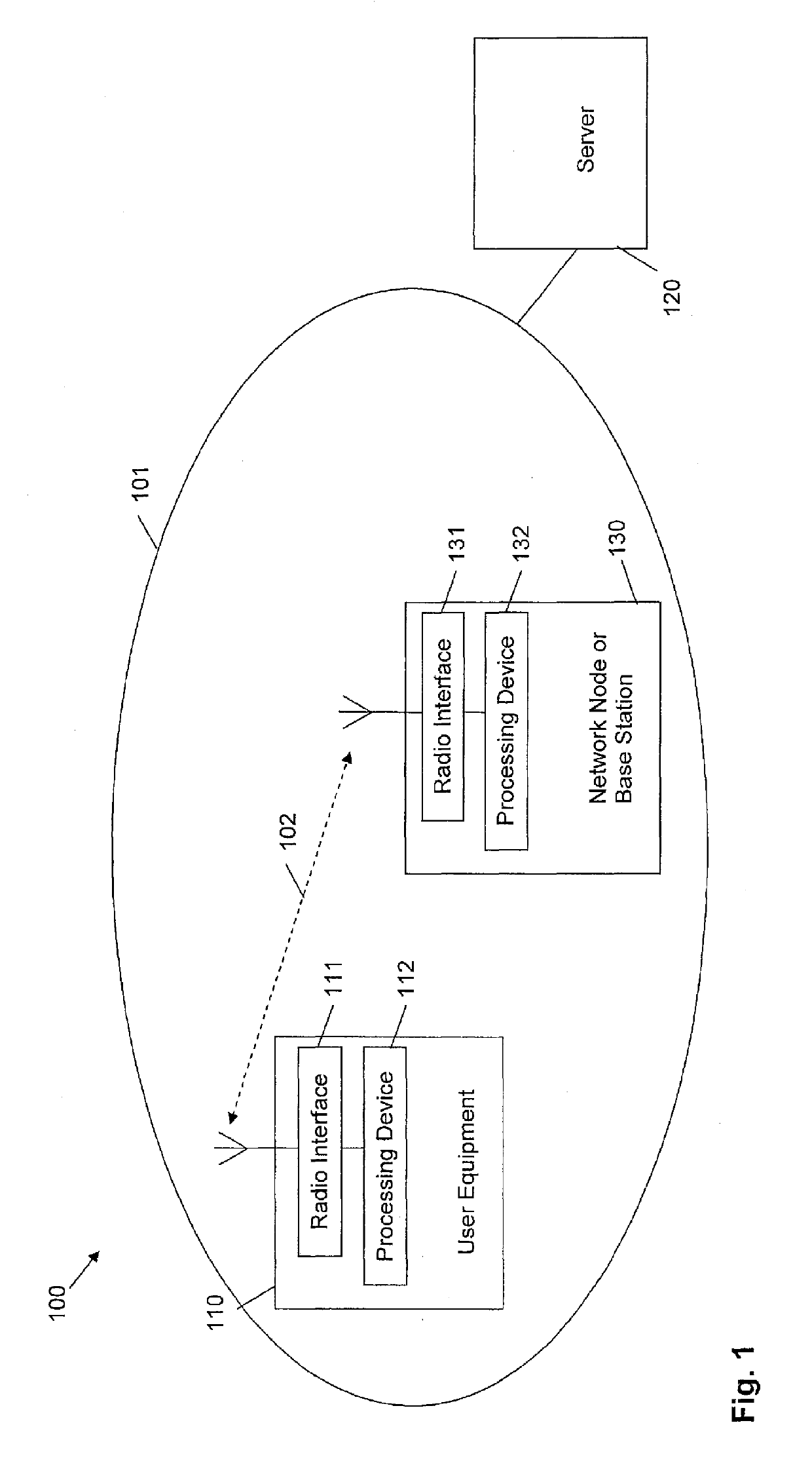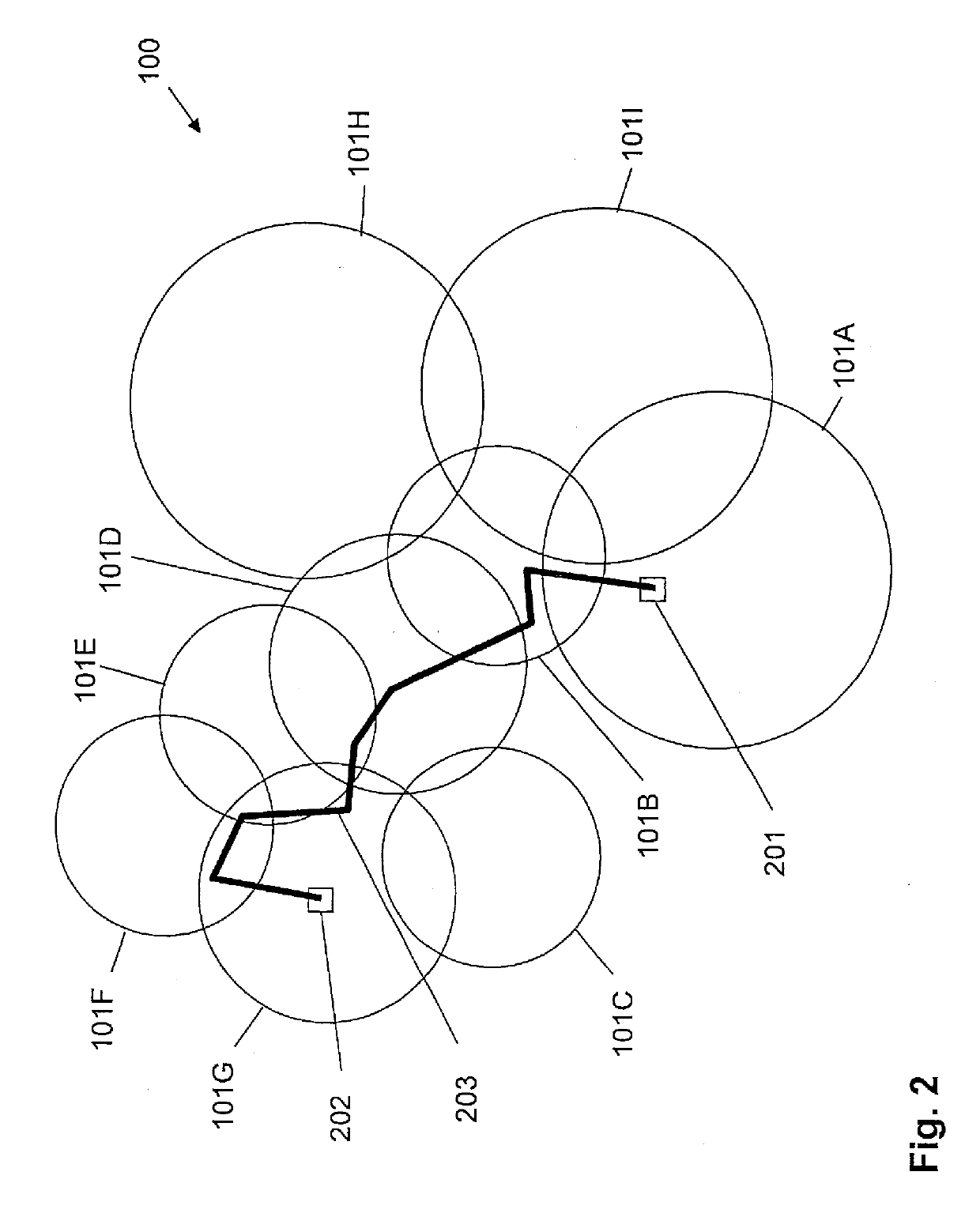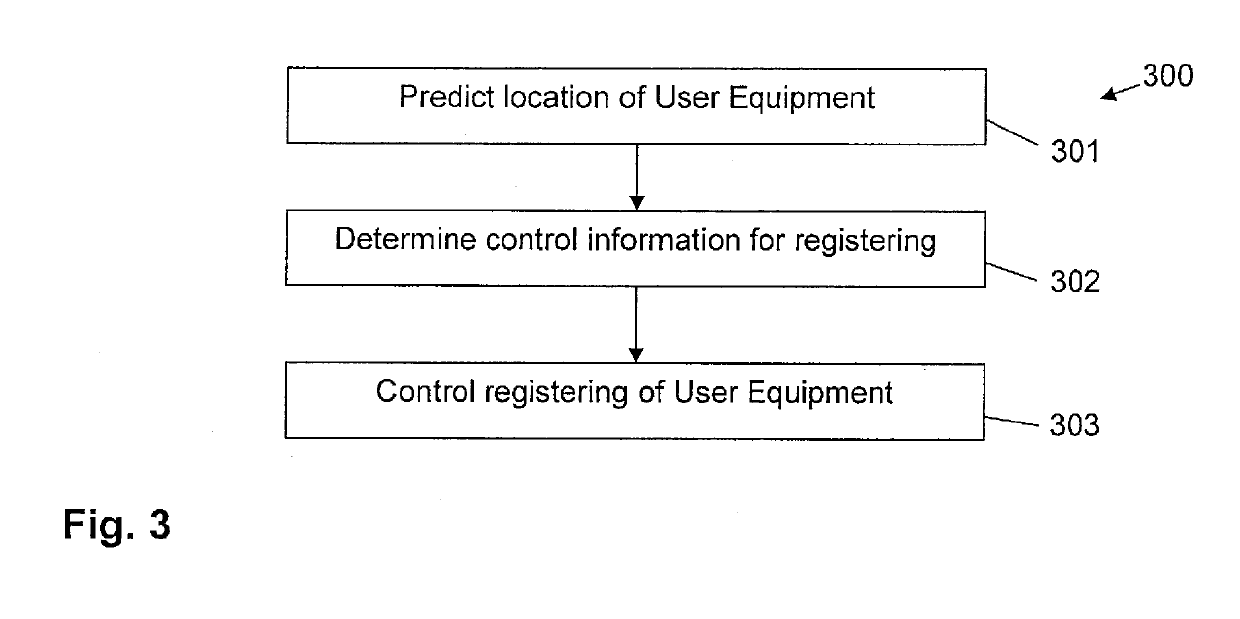Method for operating a cellular radio network
a cellular radio network and radio network technology, applied in the direction of electrical equipment, wireless communication, etc., can solve the problems of reducing the overall or individual data transmission capacity of user data in the cellular radio network, the power consumption of user equipment, and the operating time of user equipment, so as to reduce the monitoring rate and reduce the effort. , the effect of reducing the power consumption
- Summary
- Abstract
- Description
- Claims
- Application Information
AI Technical Summary
Benefits of technology
Problems solved by technology
Method used
Image
Examples
Embodiment Construction
[0021]In the following, exemplary embodiments of the present invention will be described in more detail. It is to be understood that the features of the various exemplary embodiments described herein may be combined with each other unless specifically noted otherwise. Same reference signs in the various drawings refer to similar or identical components. Any coupling between components or devices shown in the figures may be a direct or indirect coupling unless specifically noted otherwise.
[0022]FIG. 1 shows a wireless communication system 100, for example a cellular-based wireless radio telecommunication network. The communication system 100 may comprise a plurality of network nodes, e.g. base stations or nodes providing network functions like a control plane function. One of these network nodes is shown as base station 130 in FIG. 1. To each base station a so-called radio cell is assigned. Radio cell 101 shown in FIG. 1 is assigned to the base station 130. A user equipment 110, whic...
PUM
 Login to View More
Login to View More Abstract
Description
Claims
Application Information
 Login to View More
Login to View More - R&D
- Intellectual Property
- Life Sciences
- Materials
- Tech Scout
- Unparalleled Data Quality
- Higher Quality Content
- 60% Fewer Hallucinations
Browse by: Latest US Patents, China's latest patents, Technical Efficacy Thesaurus, Application Domain, Technology Topic, Popular Technical Reports.
© 2025 PatSnap. All rights reserved.Legal|Privacy policy|Modern Slavery Act Transparency Statement|Sitemap|About US| Contact US: help@patsnap.com



